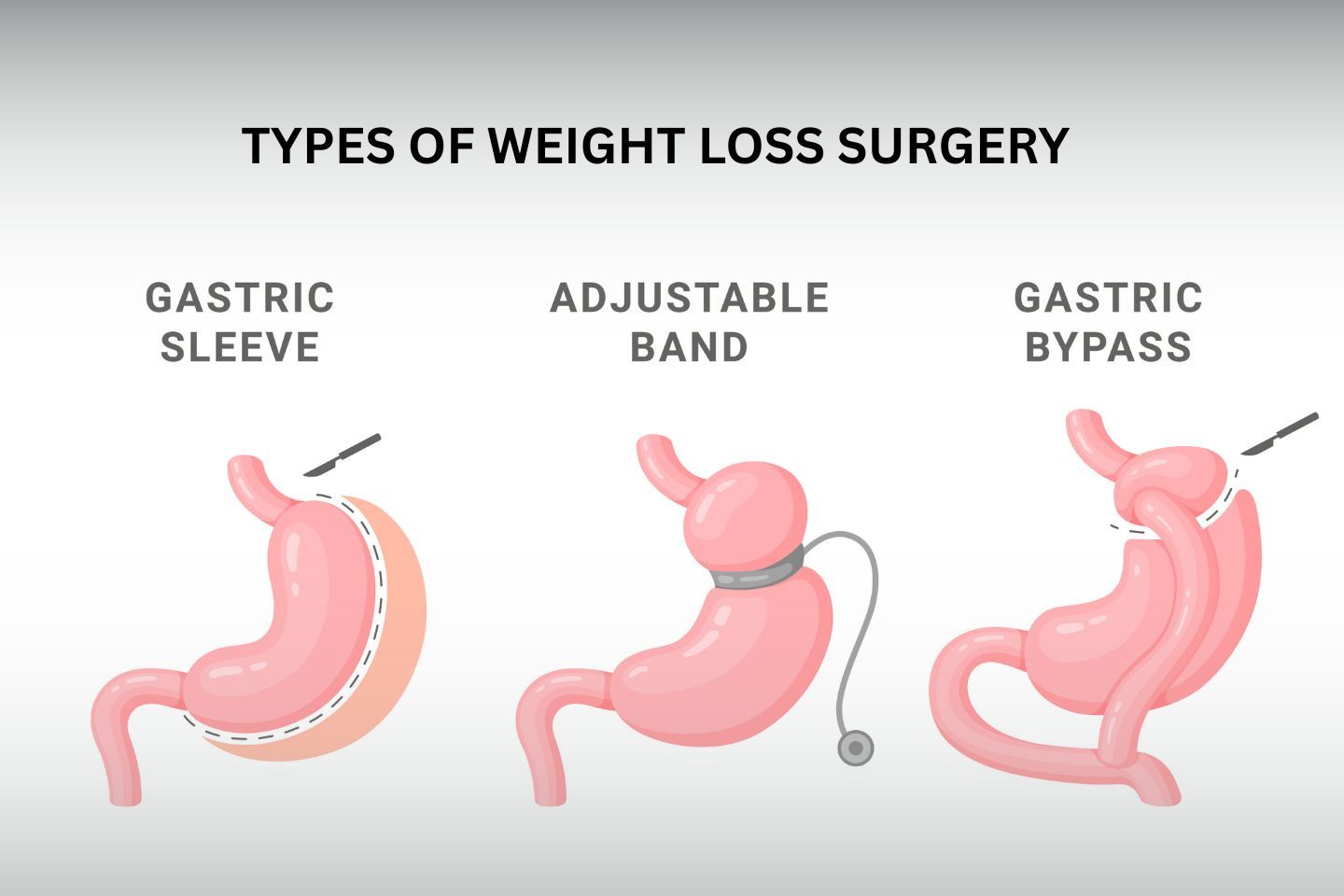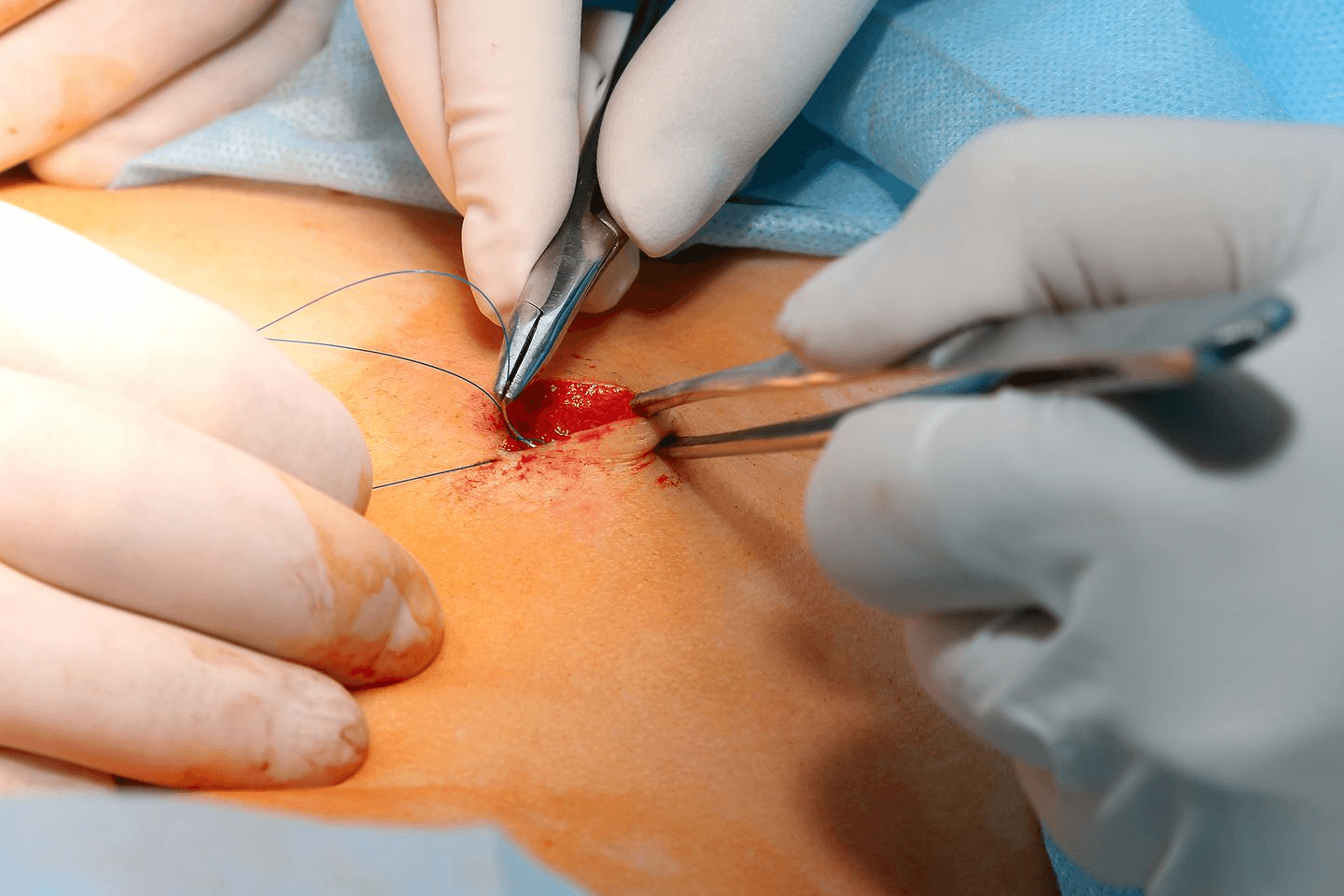
Types of Weight Loss Surgery for Obesity
Introduction
Weight loss surgery, also known as bariatric surgery, is a medical procedure designed to help people achieve significant weight loss when traditional methods like diet and exercise haven't been successful. These surgical procedures work by changing how your digestive system functions, making it easier to lose weight and keep it off long-term.
If you've struggled with obesity for years and tried various weight loss methods without lasting results, bariatric surgery may offer the solution you've been looking for.
Understanding Obesity and BMI: Who Qualifies for Weight Loss Surgery
Obesity is a medical condition where excess body fat has accumulated to the point that it negatively affects your health. It's not simply about being overweight - obesity is a complex disease that increases your risk of serious health problems like diabetes, heart disease, and sleep apnea.
BMI Categories and Weight Classifications
Body Mass Index (BMI) is the primary tool doctors use to determine if you qualify for weight loss surgery. BMI is calculated by dividing your weight by your height squared.
BMI Categories1:
Normal weight: 18.5 to 24.9
Overweight: 25 to 29.9
Obese: 30 to 39.9
Severely obese: 40 or higher
Who Qualifies for Bariatric Surgery
You may be a good candidate if:
Your BMI is 40 or above (severely obese)
Your BMI is 35-39, AND you have serious weight-related health problems like diabetes, high blood pressure, or sleep apnea
You've tried other weight loss methods without long-term success
You're committed to making permanent lifestyle changes
Bariatric surgery is a valuable tool, but lasting results come from pairing it with healthy eating habits and regular physical activity.
Obesity was initially considered a health issue only in high-income and first-world countries for the longest time. However, it has been on the rise dramatically, in middle and low-income countries, specifically those in urban settings.
What is Weight Loss Surgery?
The procedure of weight loss surgery helps by simply altering the way your body digests food so that it is far easier to reduce weight and maintain a reduced weight over time. The weight loss resulting from these surgical procedures works in two main ways which can be employed independently or simultaneously depending on the type of surgery you undertake.
1. Restriction (The Reduction of the Size of Your Stomach)
Restrictive procedures work by physically reducing your stomach size, hence naturally limiting the quantity of food you can take at a sitting. Having a reduced stomach capacity, you will observe several quite significant changes:
- The person may feel full after eating much smaller portions.
The sensation of fullness may occur much sooner.
Appetite may be significantly decreased.
2. Malabsorption ( modification of the way you absorb food)
Malabsorptive surgeries reduce the absorption of all the calories and nutrients in the food you consume by changing your digestive system in such a way that your body cannot absorb all of it. It is assumed to work by altering the usual route that food follows through your digestive system, thereby creating a kind of shortcut that sidetracks some of your small intestine where the majority of calorie absorption normally takes place.
Most current weight loss surgeries incorporate both restrictive and malabsorptive principles in order to improve effectiveness and offer the optimal results to patients.
Types of Weight Loss Surgery
Gastric Band (Lap-Band) - Least invasive option
Adjustable gastric banding is a kind of restrictive surgery procedure whereby the surgeon divides the stomach into two pieces by means of an inflatable band. The former is a smaller upper pouch, and the latter is a bigger lower part. The two parts are linked with a small channel that retards the emptying of the upper pouch. The majority of individuals who have adjustable gastric banding surgery find that they can only consume half a cup to one cup of food, after which they either feel stuffed or nauseated. They are also recommended to take soft foods and to chew food well. When compared to the majority of the other newer weight loss surgery procedures, this procedure is actually seen as being one of the safest. It is also less invasive, thus leaving the patient with a smaller scar, and they also recover quickly. Moreover, the patients can have the band added, loosened or tightened. They also have the option of surgery to remove the band in case they want to.
What it does: A silicone band that can be adjusted is put around the upper section of your stomach.
Mechanism of action:
Forms a little pocket over the band
The band can be made tight or loose according to the requirement
Delays food movement so that you feel more satisfied time
Pros:
Minimum invasive alternative
Reversible and adjustable
Neither the cutting of the stomach nor the intestines
Reduced operative risk
Gastric Sleeve (Sleeve Gastrectomy) - Most popular option
Sleeve gastrectomy is another form of restrictive surgery whereby the surgeon performs the operation by removing about 80 percent2 of the stomach of the patient, leaving a thin tube. The intestines are attached to the narrow tube, which is also called a sleeve. This is a weight loss surgery that is advisable for the very obese individuals. The procedure is also less invasive, as patients have a low risk of losing weight. When their health permits it, patients who require it can have a second surgery / staged surgery, such as a gastric bypass, usually after a year. This procedure does not alter the absorption of food in the body since the intestines are not removed. Therefore, the patient would not likely experience a shortage in nutrition.
What it is: Your surgeon will take out approximately 80 percent2 of your stomach and leave a small banana-shaped sleeve.
Mechanism of action:
Your stomach can contain a lot less food (beginning with 1/4 cup)
You get satisfied soon and remain satisfied longer
Lowers hunger hormones
Pros:
Less complex practice with fewer complications
No foreign body in your body
Good outcome to weight loss (60-70 % of excess weight);
Reduced danger of dietary insufficiencies
Gastric Bypass (Roux-en-Y) - Most effective for weight loss3
The Roux-en-Y Gastric bypass surgery is yet another new weight loss surgery alternative that incorporates both restrictive and malabsorptive techniques. In this surgery, the stomach is made smaller by separating its upper part from the lower part. The upper part is then directly joined to the lower part of the small intestine. In this process, the surgeon basically provides a shortcut to the food, bypassing a section of the small intestine and the stomach. This digestive tract shortcut means that the body absorbs fewer calories. The weight loss is considered dramatic and very rapid, with nearly half the weight loss happening in the first six months in patients who undergo this procedure. The weight loss factually can go on up to 2 further years, after surgery.
What it does: Divides a small stomach pouch and then joins it directly to the small intestine, bypassing the greater part of your original stomach.
Mechanism of action:
Putting together restriction and malabsorption
Your stomach can contain 1- 2 ounces of food
Food passes through a portion of your intestine, losing calories
Pros:
Lose 50-60% of excess weight4
Rapid recovery from diabetes and other ailments.
About Meril Mirus™ Endoscopic Linear Cutter:
Meril’s MIRUS™ Endoscopic Linear Cutter is a stapling device that assists in obesity and weight loss surgery. MIRUS endoscopic linear cutter and TRIO reloads are available at different lengths with three varied staple heights to accommodate varied tissue thicknesses.
A time-tested brand, Meril’s MIRUS guarantees optimal compression and less tissue trauma. This reliable, flexible, and easy-to-use product can be used in various types of weight loss surgeries in India and abroad. It is easy to handle and also facilitates better tissue manipulation, leaving a smooth and precise transection.
Final Note
Discuss with your doctor which surgical option is best suited for your individual needs before making any decisions. It's essential to review the benefits and risks of each procedure with your healthcare provider.
While surgery can be highly effective for weight control, patients must commit to following all post-operative care instructions. Success depends on both the surgical procedure and your dedication to maintaining the recommended lifestyle changes after surgery.
Remember, weight loss surgery is a tool, not a quick fix. Your long-term commitment to healthy habits will determine your success in achieving and maintaining your weight loss goals.



